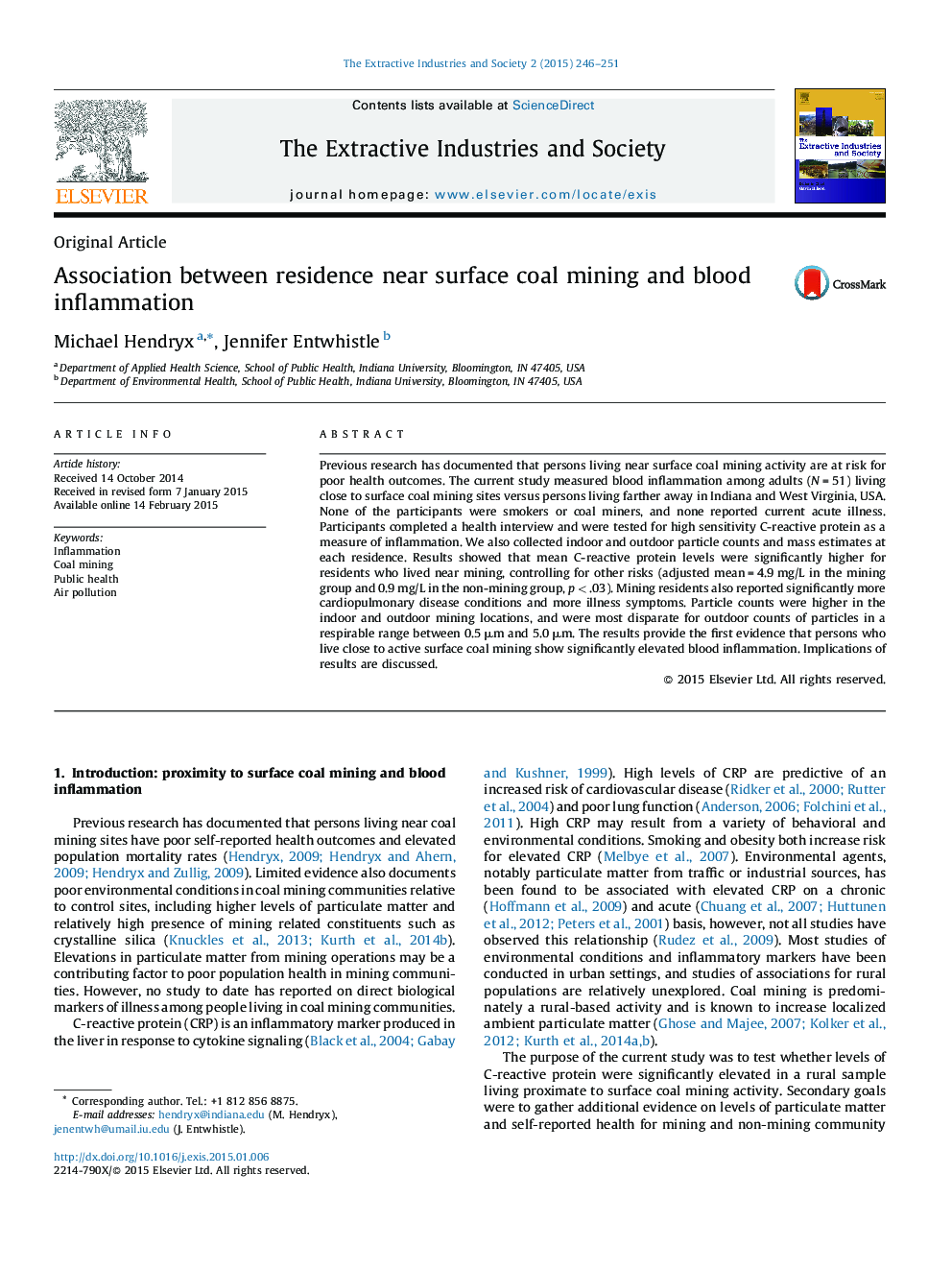| Article ID | Journal | Published Year | Pages | File Type |
|---|---|---|---|---|
| 1047491 | The Extractive Industries and Society | 2015 | 6 Pages |
•Adjusted C-reactive protein is elevated for adults living near surface coal mines.•Counts of ambient particulate matter are higher in mining communities.•Self-reported health indicators are worse in mining communities.•All participants were non-smokers and non-miners without acute illness.
Previous research has documented that persons living near surface coal mining activity are at risk for poor health outcomes. The current study measured blood inflammation among adults (N = 51) living close to surface coal mining sites versus persons living farther away in Indiana and West Virginia, USA. None of the participants were smokers or coal miners, and none reported current acute illness. Participants completed a health interview and were tested for high sensitivity C-reactive protein as a measure of inflammation. We also collected indoor and outdoor particle counts and mass estimates at each residence. Results showed that mean C-reactive protein levels were significantly higher for residents who lived near mining, controlling for other risks (adjusted mean = 4.9 mg/L in the mining group and 0.9 mg/L in the non-mining group, p < .03). Mining residents also reported significantly more cardiopulmonary disease conditions and more illness symptoms. Particle counts were higher in the indoor and outdoor mining locations, and were most disparate for outdoor counts of particles in a respirable range between 0.5 μm and 5.0 μm. The results provide the first evidence that persons who live close to active surface coal mining show significantly elevated blood inflammation. Implications of results are discussed.
